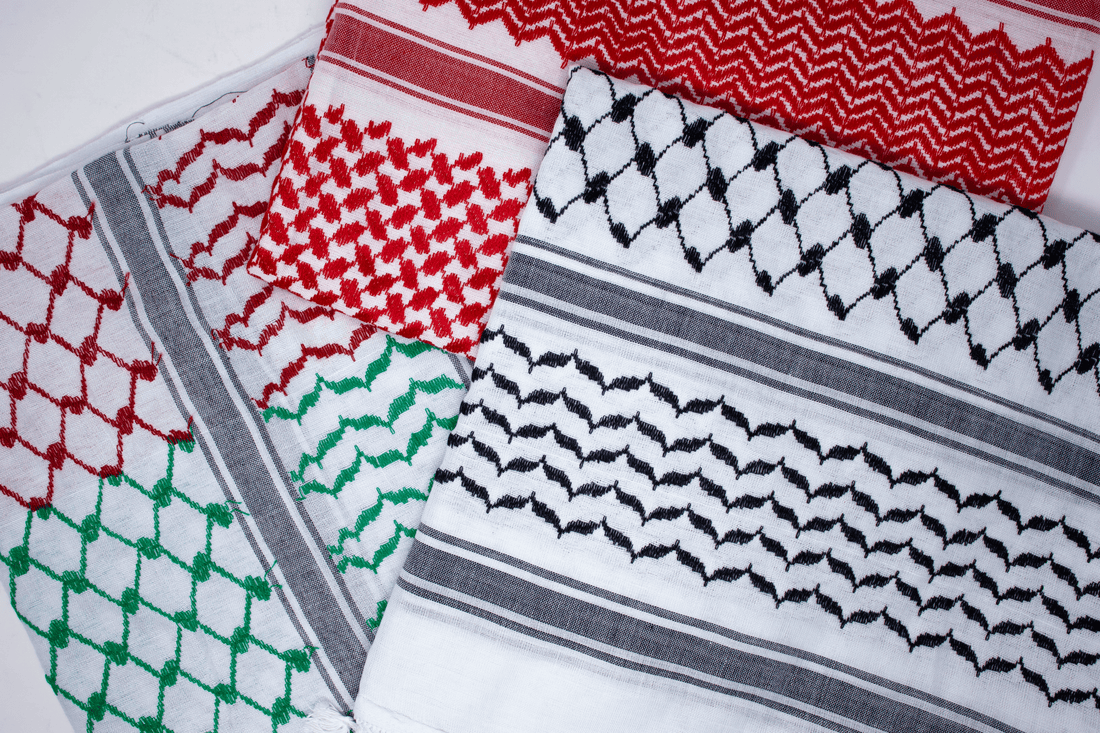
Hirbawi Kufiya
The traditional Palestinian headdress is known as kufiya, kuffiyeh, or hatta. The kufiya is commonly found in the arid regions of the Middle East as a protection from sunburn, dust, and sand. It became a symbol of Palestinian nationalism in the 1930s, after the rebels wore it in their fight against the British. This led to the kufiya being banned, which only meant that everyone wanted to wear one; thereby making it harder for authorities to distinguish locals from rebels. The rich history of the kufiya immortalized it and today, it’s worn as a symbol of rank in Palestine.
Today, this iconic piece of cloth - carefully interwoven with the symbolic pattern of resistance - has become a huge part of Palestinian identity. It’s not just a scarf, but a representation of the community’s strength and resilience in the face of war and unrest.

Fifty years ago, there were more than 30 kufiya factories operating in Palestine. Now, there is only one - owned by Yasser Hirbawi. Yasser Hirbawi founded the Hirbawi Textiles kuffiyeh factory in 1961 in the Palestinian city of Al-Khalil.
Initially, the business was very successful – he had employed 25 workers who were producing 150,000 kuffiyeh annually. Sadly, this did not last. With the advent of capitalism and free markets, it became easier to import cheap, mass-produced kuffiyeh worldwide. The level of global competition, triggered by the high demand, only meant that the authentic manufacturer was pushed out of the market. To make matters worse, the ongoing conflict led to several checkpoints and roadblocks, creating even greater limitations for Hirbawi. With no access to local and international markets, sales decreased drastically, and it got to the point where production dropped to a mere 10,000 scarves annually.
The next few years were difficult for Yasser Hirbawi as he had to come up with a plan to tackle international competition. Without access to modern assembly lines, low-quality materials, and local markets, there was no way he could compete with the mass production of low-cost kuffiyeh around the world.
With the looming threat of the disappearance of original Palestinian kuffiyeh from the market, the story was picked up by various social media platforms, as well as by international media. They persistently wrote and created awareness about Hirbawi Textiles, warning consumers that purchasing mass-produced, cheaper kuffiyeh risked driving the original business out of the market. Foreign consumers have ever since started supporting Hirbawi to revive the growth of the original kuffiyeh factory.

This is where Holy Land Dates comes in - its business model is built around the objective of creating a platform which provides Palestinian goods to people all over the world. In order to make it easier for foreigners to purchase an original kufiya, HLD purchases original Palestinian kuffiyeh directly from Hirbawi Textiles and sells it to people across the globe. In doing so, HLD hopes to keep the factory alive and boost the local economy.
Holy Land Dates provides you with the opportunity to give back to the Palestinian community by buying directly from manufacturers and supporting small businesses. 50% of all net profits go towards helping vulnerable children all over the world.